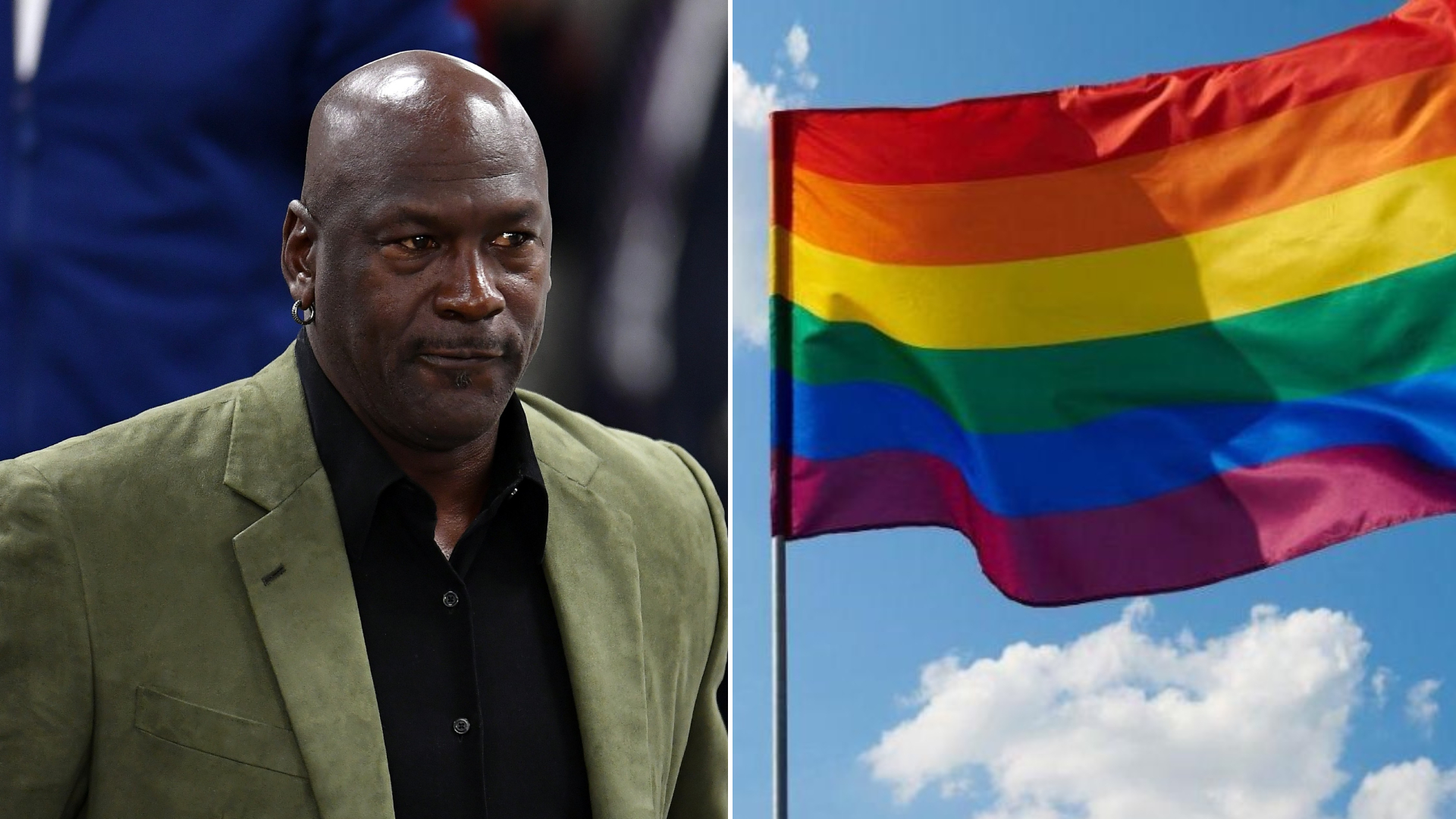In the age of viral content and sensational headlines, misinformation spreads faster than ever. Recently, a controversial claim about basketball icon Michael Jordan calling for a ban on Pride flags in sports and U.S. schools has taken over social media. While the story has fueled heated debates, the reality is far from what many believe.

The False Narrative: Where Did It Come From?
The claim that Michael Jordan proposed banning Pride flags in schools and sports originated from a satirical article published on January 4, 2025, by the website Esspots.com. The article, titled “Michael Jordan Calls for Ban on Pride Flags in Sports and Schools,” was clearly labeled as satire, with a disclaimer stating:
“Note this is satire, it’s not true.”
Despite this clear warning, many social media users took the article at face value, stripping it of its satirical context. Before long, the claim was making rounds across platforms, causing outrage and confusion.
Video: Best of Michael Jordan’s Playoff Games
How Social Media Amplified the Misinformation
In today’s digital world, a sensational claim often spreads faster than the truth. Within days, the false story had been shared thousands of times across Facebook, Twitter, and Instagram.
- A Facebook post on January 26, 2025, read:
“BREAKING NEWS: Michael Jordan calls for a ban on the Pride flag in sports and U.S. schools.” - An Instagram post on January 11, 2025, featured an edited image of Jordan alongside a misleading caption, falsely attributing the stance to him.
From clickbait websites to misleading YouTube videos, the claim gained traction, with many failing to check the source or verify its authenticity.
Fact-Checking the Michael Jordan Pride Flag Ban Hoax
Once the misinformation spiraled out of control, fact-checking organizations stepped in to set the record straight.

What Did the Experts Say?
- PolitiFact, a leading fact-checking organization, investigated the viral claim and found no evidence that Michael Jordan had ever made such a statement.
- Snopes, another well-known debunker of falsehoods, verified that the claim originated from a satirical article, proving it was entirely fabricated.
- Mainstream news outlets confirmed that Jordan had never spoken about banning Pride flags, reinforcing that the story was nothing more than an internet hoax.
Despite these efforts, false claims continue to circulate, highlighting the ongoing battle against misinformation.
The Dangers of Misinformation in the Digital Age
Why does this matter? Because misinformation has real consequences.
1. It Damages Reputations
Public figures like Michael Jordan can suffer reputational harm due to fabricated stories. Even after being debunked, such claims often linger online, influencing public perception.

2. It Fuels Division
In an already polarized society, misleading information creates unnecessary conflict. This particular hoax pitted LGBTQ+ rights supporters against traditionalists, even though the claim itself was entirely false.
3. It Undermines Trust in Media
When misinformation spreads unchecked, people lose trust in credible news sources. This makes it even harder to differentiate fact from fiction, allowing bad actors to manipulate public opinion.
How to Spot and Stop Misinformation
Want to avoid falling for fake news? Here are some critical steps to verify information before sharing it:
1. Check the Source
Not every website is credible. If a claim comes from an unknown blog or a social media post with no source, it’s best to dig deeper.
2. Look for Disclaimers
Many satirical sites clearly label their content as fiction. If an article seems outrageous, check whether it has a disclaimer stating that it’s satire or parody.
3. Cross-Check with Reputable News Outlets

If a major claim is real, trustworthy news organizations like CNN, BBC, or The Associated Press will report on it. If only fringe websites are covering the topic, be skeptical.
4. Analyze the Language
Misinformation often uses emotional, exaggerated language like:
- “SHOCKING!”
- “You won’t believe this!”
- “The mainstream media won’t tell you this!”
This type of phrasing is a red flag that a claim may be misleading.
5. Be Cautious with Viral Social Media Posts
If a Facebook post or Twitter thread is gaining traction without any credible source, it’s likely misleading. Always verify before sharing.
Michael Jordan’s Real Stance on Social Issues
Video: Why Did Michael Jordan Cover The Reebok Logo At Olympics Medal Ceremony
While Jordan has largely avoided political debates, he has used his platform for social good.
- In 2020, he and the Jordan Brand pledged $100 million over 10 years to fight racial injustice, support education, and advance social equality.
- He has also spoken about economic opportunities for minorities but has never taken a public stance on LGBTQ+ issues in schools or sports.
His legacy remains rooted in basketball excellence and philanthropy, not in political controversy.
Conclusion: The Truth Always Matters
The false claim about Michael Jordan banning Pride flags is just another example of how misinformation can quickly spiral out of control.
This hoax underscores the importance of verifying facts, questioning sources, and thinking critically before sharing information.
As the digital landscape continues to evolve, staying informed is more than a responsibility—it’s a necessity. The next time you see a shocking claim about a public figure, remember: truth isn’t always in the headlines—sometimes, you have to dig a little deeper.


